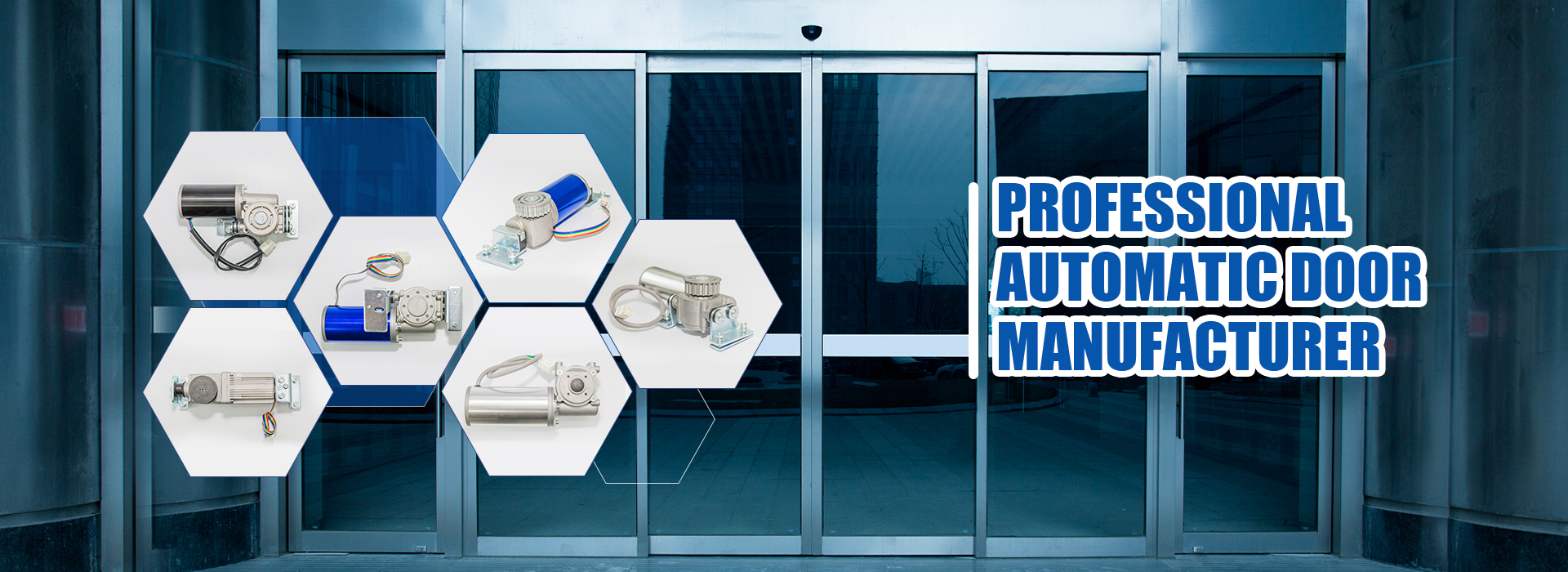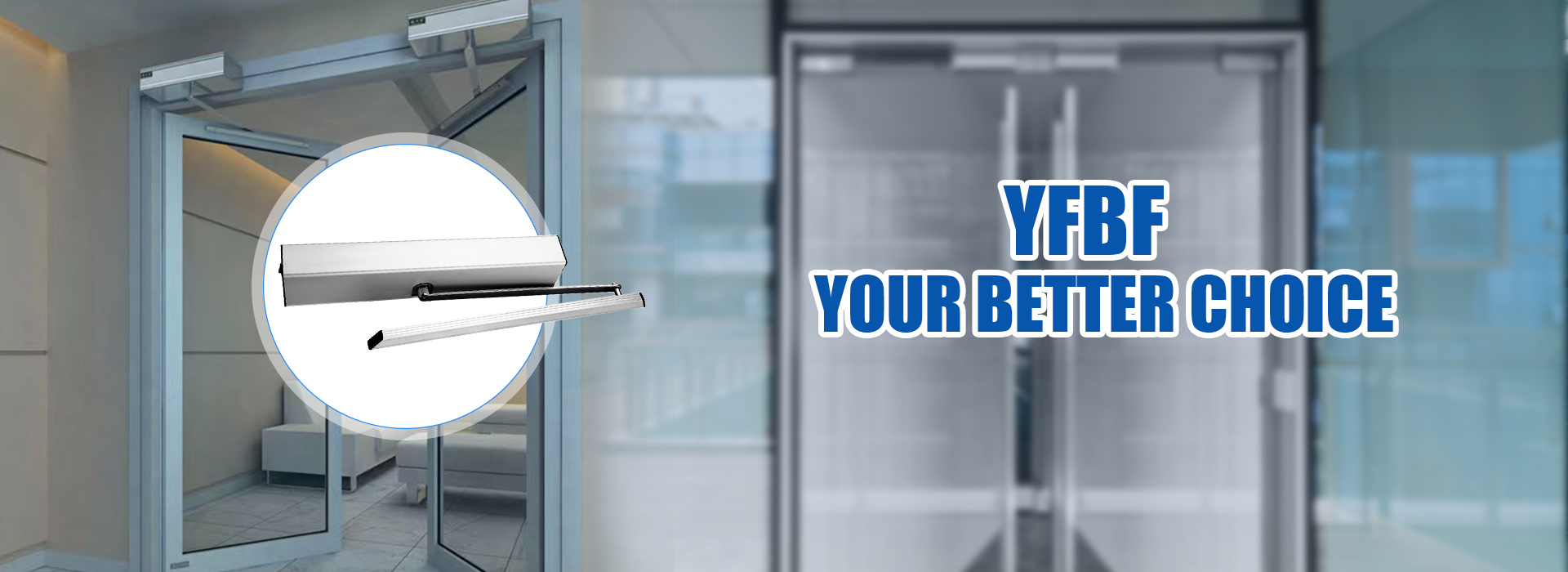
Imagine walking into a building where the doors open effortlessly as you approach. That’s the magic of an automatic door motor. These devices have become essential, especially as urbanization grows. In fact, the market for automatic door controls is set to surge from $15.2 billion in 2023 to $27.5 billion by 2032.
Key Takeaways
- Automatic door motors make life easier with hands-free entry.
- They help people with disabilities move in and out easily.
- Using energy-saving door motors lowers energy bills and pollution.
Key Benefits of Automatic Door Motors
Convenience and Time-Saving
Automatic door motors make life easier by saving time and effort. Imagine walking into a busy shopping mall with your hands full of bags. Instead of struggling to push open a heavy door, the motorized system senses your presence and opens the door for you. This seamless operation is not just a luxury; it’s a necessity in today’s fast-paced world. Businesses, hospitals, and airports rely on these systems to keep foot traffic flowing smoothly, reducing bottlenecks and improving overall efficiency.
For homeowners, an automatic door motor can be a game-changer. Whether it’s a garage door or a front entrance, the convenience of opening doors with a remote or sensor adds a touch of modernity to daily routines. It’s all about making life simpler and more efficient.
Enhanced Accessibility for All
Accessibility is a cornerstone of modern design, and automatic door motors play a crucial role in achieving it. These systems ensure that everyone, including individuals with disabilities, can enter and exit buildings without barriers. For example, a swing-door operator powered by an automatic motor can open a door effortlessly, allowing wheelchair users or elderly individuals to move freely.
The growing demand for automated solutions highlights their impact on accessibility. The global market for automatic door control systems, valued at $14.6 billion in 2023, is projected to reach $25.3 billion by 2032. This growth, driven by a 6.5% compound annual growth rate, reflects the increasing importance of creating inclusive spaces for all.
Improved Safety and Security
Safety and security are top priorities in any setting, and automatic door motors contribute significantly to both.These systems often come equipped with sensors that detect movement, ensuring the door doesn’t close on someone accidentally. This feature is especially important in high-traffic areas like hospitals and schools, where the risk of injury must be minimized.
In addition to safety, automatic door motors enhance security. Many systems can integrate with access control technologies, such as keycards or biometric scanners. This ensures that only authorized individuals can enter restricted areas, providing peace of mind for businesses and property owners.
Energy Efficiency and Cost Savings
Automatic door motors are not just convenient; they’re also energy-efficient. By opening and closing doors only when needed, these systems help maintain indoor temperatures, reducing the workload on heating and cooling systems. This translates to lower energy bills and a smaller carbon footprint.
Electric motors, including those used in automatic door systems, account for over 50% of all electrical energy consumption in the U.S. While their initial purchase price is only about 1% of their total cost of ownership, their operating costs—driven by power consumption—can exceed 90% over 20 years. Choosing energy-efficient motors can significantly reduce these costs, making them a smart investment for both residential and commercial properties.
Types of Automatic Door Motors and Their Applications
Sliding Door Motors
Sliding door motors are a popular choice for spaces that require smooth and efficient access. These motors operate doors that slide horizontally, making them ideal for areas with limited space. Retail stores often use sliding doors to create a welcoming entrance for customers. Hospitals also rely on them to ensure easy movement for patients and staff.
Tip: Sliding door motors are perfect for high-traffic areas where space-saving designs are essential.
Swing Door Motors
Swing door motors are designed for doors that open and close on hinges. These motors are commonly used in homes, offices, and healthcare facilities. They offer a seamless way to automate traditional doors, enhancing accessibility for everyone. For example, a swing-door operator powered by a 24V brushless DC motor can handle heavy doors with ease. Its silent operation and high efficiency make it a reliable choice for large entrances.
Revolving Door Motors
Revolving door motors bring elegance and functionality to commercial spaces. These motors power doors that rotate around a central axis, allowing continuous entry and exit. Hotels and office buildings often use revolving doors to manage foot traffic while maintaining indoor temperatures. Their energy-efficient design helps reduce heating and cooling costs.
Telescopic Door Motors
Telescopic door motors are perfect for locations that need wider openings. These motors allow doors to slide in overlapping sections, creating a larger entryway. Airports and conference centers benefit from telescopic doors, as they accommodate large groups of people effortlessly.
Specialized Motors for Industrial and Commercial Use
Industrial and commercial settings demand robust and versatile door motors. In retail spaces, automatic doors improve crowd management and enhance customer experience. Offices prioritize security and accessibility, while healthcare facilities focus on hygiene and patient movement. Residential adoption is growing too, driven by smart home technologies that emphasize convenience and energy efficiency.
Note: Choosing the right motor depends on the specific needs of the space, whether it’s operational efficiency for a factory or seamless access for a home.
How Automatic Door Motors Work
Understanding how automatic door motors operate can help you appreciate their efficiency and reliability. These systems combine advanced technology with practical design to create seamless door automation. Let’s break it down into three key components.
Sensors and Activation Mechanisms
Sensors are the unsung heroes of automatic doors. They detect movement or proximity and send signals to activate the motor. For example, when someone approaches a door, the sensor picks up their presence and triggers the motor to open the door. This process happens in milliseconds, ensuring a smooth and quick response.
There are different types of sensors used in automatic door systems:
- Motion Sensors: Detect movement near the door.
- Pressure Sensors: Respond to weight or pressure on a mat.
- Infrared Sensors: Sense heat or proximity.
These sensors are designed with precision to ensure safety and reliability. For instance, edge sensors prevent the door from closing if an object or person is in the way. According to documented specifications:
| Specification | Value |
|---|---|
| Accuracy of measuring device | ±1% |
| Rise and fall time | ≤ 5 ms |
| Force for edge sensor actuation (room temperature) | ≤ 15 lbf |
| Door reversal time after obstruction | ≤ 2 seconds |
This level of accuracy ensures that automatic doors operate safely, even in challenging conditions.
Motorized Systems and Power Sources
At the heart of every automatic door motor is a motorized system that powers the door’s movement. These systems use gear motors and controllers to open and close doors efficiently. Two main types of operators are commonly used:
- Electro-mechanical Operators: Ideal for most applications, offering smooth and reliable operation.
- Electro-hydraulic Operators: Designed for heavy-duty use, providing extra power for larger doors.
Power sources play a crucial role in the performance of these systems. Here’s a comparisonof the most common options:
| Power Source | Pros | Cons |
|---|---|---|
| Electrical | No battery worries Better in cold temperatures |
Requires electrification Installation complexity |
| Battery | Easy battery replacement Low battery indicator |
Limited power duration Weather impact on performance |
| Solar | No ongoing power costs Environmentally friendly |
Dependent on sunlight Requires clean solar panels |
These systems are built to last, with features like remote activation, safety mechanisms, and durability against environmental factors. They also maximize the lifespan of the door by ensuring consistent operation.
Integration with Smart Technology
Modern automatic door motors are smarter than ever. They integrate seamlessly with smart technology, making them more convenient and efficient. For instance, many systems now connect to smart home devices, allowing users to control doors remotely through apps or voice commands.
Smart technology also enhances security. Automatic door motors can work with biometric scanners, keycards, or facial recognition systems to restrict access to authorized individuals. This integration not only improves safety but also adds a layer of sophistication to any space.
Additionally, smart sensors can adapt to different environments. For example, they can adjust the door’s speed or force based on weather conditions or foot traffic. This adaptability ensures optimal performance in any setting.
Tip: When choosing an automatic door motor, consider one that supports smart technology for added convenience and security.
Choosing the Right Automatic Door Motor
Assessing Your Needs and Space
Choosing the right automatic door motor starts with understanding your space and requirements. Every building has unique needs, and the motor must fit seamlessly into its design. Architects often recommend evaluating factors like space limitations, traffic flow, and egress requirements. For outdoor doors, wind conditions can also play a big role in determining the best motor type.
Tip: If your space has limited room, sliding door motors might be the ideal choice. For larger entrances, swing or telescopic motors could offer better functionality.
Considering Door Type and Usage Frequency
The type of door and how often it’s used are key factors in selecting the right motor. Swing doors, for example, are perfect for homes and offices with moderate traffic. Sliding doors work well in high-traffic areas like malls or hospitals. Revolving doors are ideal for commercial spaces that need continuous entry and exit.
For heavy-duty applications, specialized motors designed for industrial use can handle frequent operations without compromising performance. Think about how often the door will open and close daily. A motor built for durability will save you from frequent replacements.
Evaluating Energy Efficiency and Durability
Energy efficiency and durability are essential for long-term savings. Automatic door motors that operate only when needed help reduce energy consumption. This feature keeps indoor temperatures stable, lowering heating and cooling costs. Motors with brushless DC technology, like the 24V models, offer high efficiency and a longer lifespan.
Durability matters too. Motors with robust designs and reliable gear systems can handle heavy doors and frequent use. Investing in a durable motor ensures smooth operation for years, making it a smart choice for both residential and commercial spaces.
Product Spotlight: Automatic Swing Door Motor

Features of the 24V Brushless DC Motor
The 24V brushless DC motor stands out as a cutting-edge solution for automatic swing doors. Its design eliminates brushes and commutators, which are common in older motor technologies. This innovation reduces wear and tear, resulting in a longer lifespan and lower maintenance needs. The motor also operates with remarkable efficiency, consuming less power while generating less heat. This makes it an eco-friendly choice for modern applications.
Here’s a quick comparison of the 24V brushless DC motor with older technologies:
| Feature | 24V Brushless DC Motor | Older Motor Technologies |
|---|---|---|
| Lifespan | Longer | Shorter |
| Power Consumption | Lower | Higher |
| Heat Generation | Reduced | Increased |
| Noise Level | Quieter | Noisier |
| Design Innovation | No brushes/commutators | Uses brushes/commutators |
This motor’s advanced design ensures reliable performance, even in demanding environments.
Advantages of Silent Operation and High Efficiency
Nobody enjoys the sound of a noisy door. The 24V brushless DC motor operates almost silently, creating a pleasant experience for users. Its helical gear transmission further enhances smooth and quiet operation. High efficiency is another standout feature. By maximizing torque and minimizing energy loss, this motor delivers powerful performance without driving up energy costs. It’s a win-win for both functionality and sustainability.
Applications for Heavy and Large Doors
This motor isn’t just for standard doors—it’s built to handle heavy-duty applications. For instance, a 66.2-tonne door used in an industrial X-ray inspection system relies on similar technology. These doors provide radiation protection while allowing easy access to large components, such as vehicles. Companies like Stahl-Projektbau Wentz GmbH specialize in constructing such robust doors, showcasing the motor’s adaptability for industrial use. Whether it’s a large commercial entrance or a specialized industrial door, this motor gets the job done.
Installation and Maintenance Tips
Professional Installation vs. DIY
Installing an automatic door motor might seem like a straightforward task, but it often requires professional expertise. A professional installer ensures the motor is compatible with the door’s size and weight, which is critical for smooth operation. For instance, larger doors demand more powerful motors, and professionals can make precise adjustments to meet these needs. They also follow safety regulations, such as those outlined in NFPA 70 and OSHA standards, to guarantee a safe and efficient setup.
DIY installation, on the other hand, can be tempting for those looking to save money. However, improper installation may lead to operational issues or even shorten the motor’s lifespan. Federal laws emphasize the importance of proper installation to ensure both safety and durability. For long-term reliability, professional installation is often the smarter choice.
Tip: Always check if the motor comes with UL certification and safety features like soft start/stop capabilities for enhanced durability.
Regular Maintenance for Longevity
Routine maintenance is the key to keeping automatic door motors running smoothly for years. Regular servicing not only extends the motor’s lifespan but also improves energy efficiency and reduces overall costs. Catching small issues early prevents them from escalating into expensive repairs. Maintenance also includes updating software and technology, ensuring the system stays current.
| Benefit | Description |
|---|---|
| Increased Energy Efficiency | Optimized operation reduces utility bills and energy costs. |
| Reduced Overall Costs | Early detection of issues minimizes downtime and repair expenses. |
| Increased Life of the System | Regular checks address wear and tear, prolonging the motor’s lifespan. |
| System Stays Current | Updates keep the system compatible with modern technology. |
| Improved Indoor Air Quality | Clean sensors and filters enhance air quality by reducing pollutants. |
Scheduling regular maintenance checks is a small effort that pays off in the long run. It ensures the motor operates at peak performance while minimizing unexpected breakdowns.
Troubleshooting Common Issues
Even with proper installation and maintenance, occasional issues can arise. Some of the most common problems include unwanted noise, doors not opening or closing fully, and sensor malfunctions. For example, the LCN 4600 Series automatic door operator may produce noise, which can often be resolved with a simple adjustment.
Here are a few troubleshooting tips:
- Check for obstructions in the door’s path.
- Inspect the sensors for dirt or misalignment.
- Ensure the power source is stable and sufficient.
If the problem persists, consulting a professional is the best course of action. Regular diagnostics and timely repairs keep the system running smoothly and safely.
Note: Keeping a maintenance log helps track service history and identify recurring issues quickly.
Automatic door motors redefine convenience in modern spaces. Their versatility spans sliding doors for compact areas, swinging doors for healthcare, and revolving doors for bustling airports. These systems enhance accessibility, safety, and energy efficiency, making them indispensable. Upgrading to an automatic door motor transforms any space into a smarter, more functional environment.
Tip: Choose the right motor based on your space and needs for maximum benefits.
FAQ
What types of doors can automatic door motors operate?
Automatic door motors work with sliding, swing, revolving, and telescopic doors. They adapt to different spaces, from compact areas to large entrances.
Are automatic door motors energy-efficient?
Yes! Many motors, like the 24V brushless DC models, reduce energy consumption. They open only when needed, helping maintain indoor temperatures and lower utility bills.
Post time: May-21-2025
- English
- French
- German
- Portuguese
- Spanish
- Russian
- Japanese
- Korean
- Arabic
- Irish
- Greek
- Turkish
- Italian
- Danish
- Romanian
- Indonesian
- Czech
- Afrikaans
- Swedish
- Polish
- Basque
- Catalan
- Esperanto
- Hindi
- Lao
- Albanian
- Amharic
- Armenian
- Azerbaijani
- Belarusian
- Bengali
- Bosnian
- Bulgarian
- Cebuano
- Chichewa
- Corsican
- Croatian
- Dutch
- Estonian
- Filipino
- Finnish
- Frisian
- Galician
- Georgian
- Gujarati
- Haitian
- Hausa
- Hawaiian
- Hebrew
- Hmong
- Hungarian
- Icelandic
- Igbo
- Javanese
- Kannada
- Kazakh
- Khmer
- Kurdish
- Kyrgyz
- Latin
- Latvian
- Lithuanian
- Luxembou..
- Macedonian
- Malagasy
- Malay
- Malayalam
- Maltese
- Maori
- Marathi
- Mongolian
- Burmese
- Nepali
- Norwegian
- Pashto
- Persian
- Punjabi
- Serbian
- Sesotho
- Sinhala
- Slovak
- Slovenian
- Somali
- Samoan
- Scots Gaelic
- Shona
- Sindhi
- Sundanese
- Swahili
- Tajik
- Tamil
- Telugu
- Thai
- Ukrainian
- Urdu
- Uzbek
- Vietnamese
- Welsh
- Xhosa
- Yiddish
- Yoruba
- Zulu
- Kinyarwanda
- Tatar
- Oriya
- Turkmen
- Uyghur



